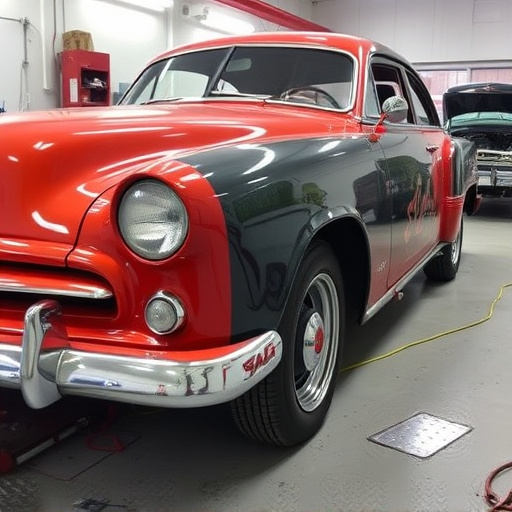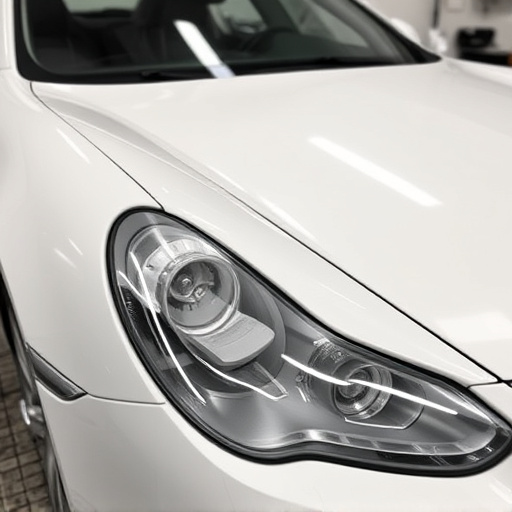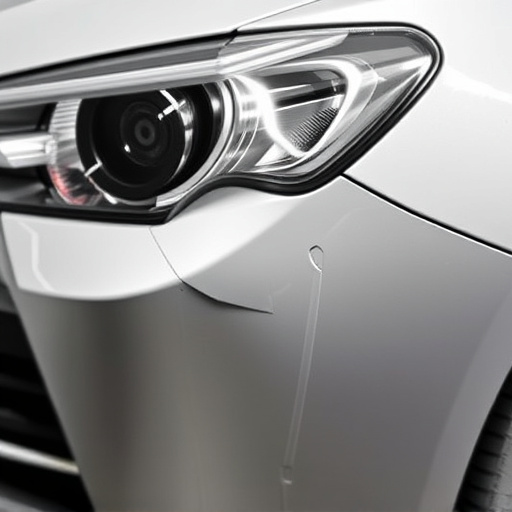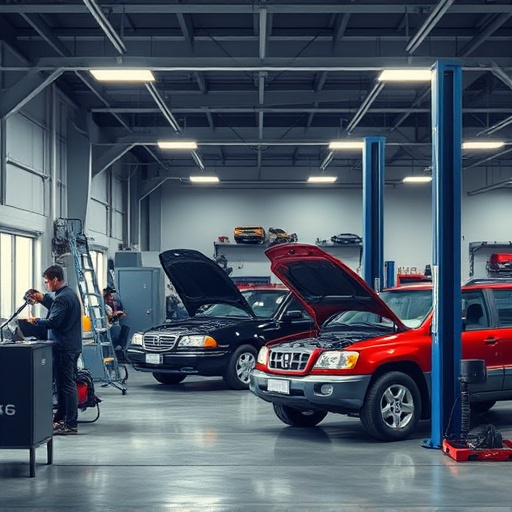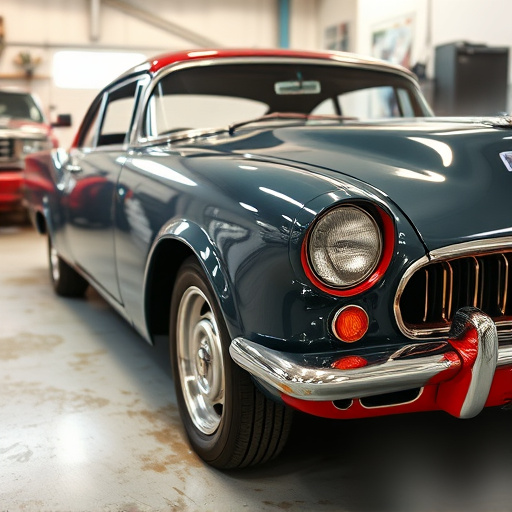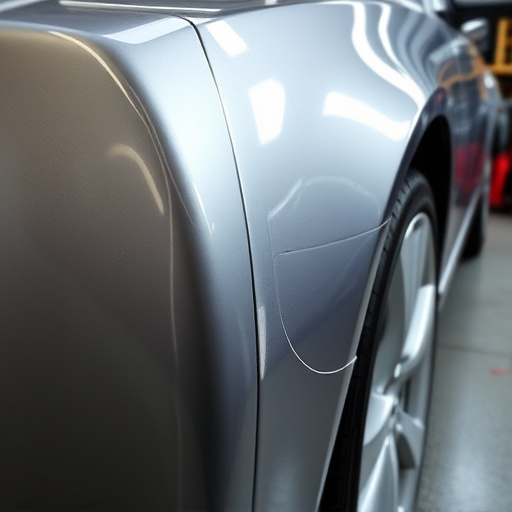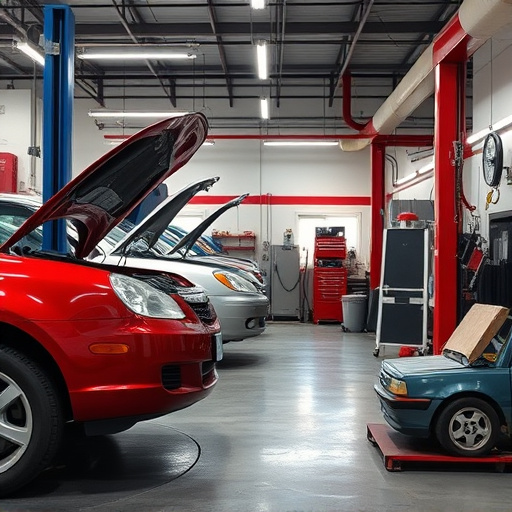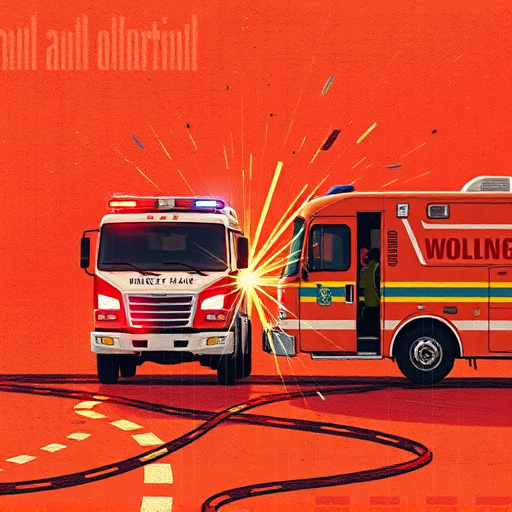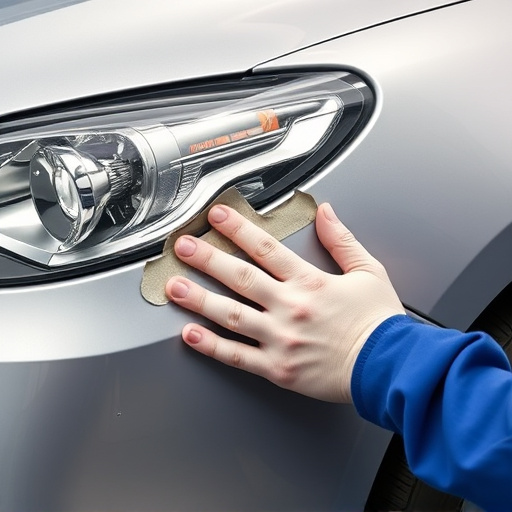Prepare workspace, choose compatible welder with adjustable settings, experiment for optimal parameters, seek professional guidance, practice various joining techniques, maintain clean surfaces and safety protocols for successful silicon bronze welding in automotive restoration work.
“Unleash the power of silicon bronze welding with this comprehensive guide. Learn how to transform your workspace into a proficient joining hub, selecting the ideal welder settings tailored for this unique alloy. Master the art of silcone bronze joining techniques, from preparation to execution. Discover expert tips and tricks to ensure successful, durable welds, opening doors to innovative metal fabrication possibilities.”
- Prepare Your Workspace for Silicon Bronze Welding
- Select and Adjust the Right Welder Settings
- Master the Techniques for Silicone Bronze Joining
Prepare Your Workspace for Silicon Bronze Welding
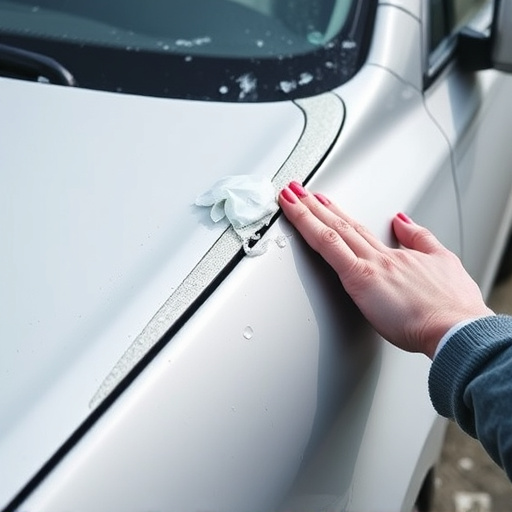
Before you begin silicon bronze welding, ensuring your workspace is prepared is paramount. This includes clearing a dedicated area free from clutter and debris, as even the smallest foreign particles can contaminate the pure silver alloy. Proper ventilation is also crucial due to silicon bronze’s toxic fumes; setting up an extraction system or working in a well-ventilated space will mitigate health risks.
For those engaged in vehicle repair, bumper restoration, or car restoration projects, investing in appropriate safety gear, such as gloves and protective eyewear, is essential. A designated area with ample space for maneuvering heavy parts and welding equipment will facilitate the process, ensuring your project proceeds smoothly without compromising safety.
Select and Adjust the Right Welder Settings

When setting up your welder for silicon bronze welding, selecting and adjusting the right settings is crucial. Start by choosing a welder designed for this specific type of metal; not all welders are created equal, so ensure it’s compatible with silicon bronze to achieve the best results. For instance, an AC/DC welder with adjustable voltage and current controls will offer greater flexibility during the process.
Next, fine-tune your settings based on the project requirements. Silicon bronze welding typically involves higher currents and lower voltages compared to other metals. Adjusting these parameters ensures a clean, strong weld. Remember, the ideal settings can vary based on the thickness of the metal and personal preference, so it’s essential to experiment and make adjustments until you achieve consistent, high-quality welds. Consider seeking guidance from experienced professionals, especially in auto repair services or Mercedes Benz repair shops, who can share valuable insights for optimal welding techniques.
Master the Techniques for Silicone Bronze Joining
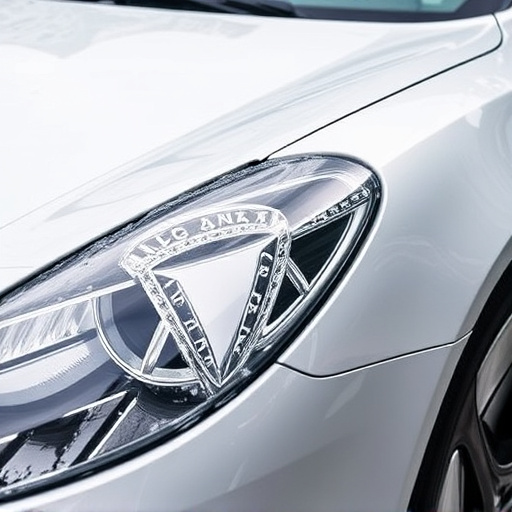
Mastering the art of silicon bronze joining is key to successful silicon bronze welding. This specialized technique requires precision and an understanding of the unique properties of silicon bronze, a copper-based alloy known for its excellent corrosion resistance and strength. The process involves creating a strong bond between metal pieces by melting and fusing them together using a high-powered welder.
To achieve precise results, practice various joining methods such as butt, lap, and edge welding. Each technique demands specific settings and techniques to ensure optimal fusion without porosity or cracking. Regularly cleaning and preparing the metal surfaces is crucial for strong welds, removing any contaminants or oxidation that could hinder adhesion. This skill, combined with knowledge of proper welder calibration and safety protocols, enables you to perform top-notch auto body services, including repair and restoration jobs, utilizing silicon bronze welding for lasting results—a valuable asset for any auto repair near me business catering to modern vehicles and their specialized metalwork needs.
Silicon bronze welding requires a meticulous approach, from workspace preparation to mastering specific techniques. By selecting the right welder settings and understanding the unique properties of silicon bronze, you can achieve strong and reliable welds. This guide has equipped you with the knowledge to set up your welder and confidently navigate the process, ensuring successful results in no time.
